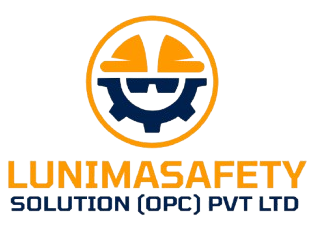When it comes to handling chemicals—whether in laboratories, factories, construction sites, or even cleaning services—safety is not optional. It’s a necessity. A Chemical Safety Training Program is the cornerstone of a healthy, hazard-free working environment, helping employees understand risks, handle substances responsibly, and react effectively in case of emergencies.
In this blog, we’ll explore everything about Chemical Safety Training Programs—what they are, why they matter, who needs them, and how to implement an effective one.
🔍 What is a Chemical Safety Training Program?
A Chemical Safety Training Program is a structured course designed to educate workers on the proper handling, storage, usage, and disposal of hazardous chemicals. It also includes instructions on the correct use of PPE (Personal Protective Equipment), understanding Safety Data Sheets (SDS), and what to do during spills or chemical-related emergencies.
🧪 Why is Chemical Safety Training Important?
Chemicals can be toxic, corrosive, flammable, or reactive. Mishandling even a small amount can lead to:
- Fires and explosions
- Burns and injuries
- Long-term health problems (like respiratory issues or cancer)
- Environmental damage
- Legal liabilities and penalties
A well-designed training program reduces these risks significantly.
👩🏭 Who Needs Chemical Safety Training?
Any individual who works in environments involving chemicals must undergo chemical safety training, including:
- Laboratory technicians
- Manufacturing and production staff
- Cleaning personnel
- Warehouse and logistics teams
- Construction workers
- Healthcare professionals
- Safety officers and supervisors
Even managers should understand the basics to ensure compliance and oversight.
📚 Key Components of a Chemical Safety Training Program
1. Understanding Hazardous Chemicals
- Types of chemicals and their properties
- Routes of exposure (inhalation, ingestion, skin contact)
- Toxicity levels and long-term health effects
2. Reading and Interpreting Safety Data Sheets (SDS)
- Sections of SDS
- How to locate hazard warnings, handling instructions, and first aid measures
3. Proper Labeling and Signage
- GHS (Globally Harmonized System) labels
- Hazard symbols and color codes
- Workplace chemical labeling standards
4. Personal Protective Equipment (PPE)
- Selecting the right PPE for specific chemicals
- Proper use and maintenance of gloves, goggles, respirators, etc.
5. Storage and Handling Procedures
- Segregation of incompatible chemicals
- Ventilation systems and fume hoods
- Spill-proof containers and secondary containment
6. Spill and Emergency Response
- Spill containment and cleanup procedures
- Evacuation protocols
- Fire extinguishing techniques
- First aid for chemical exposure
7. Waste Disposal Guidelines
- Classification of chemical waste
- Safe disposal procedures
- Environmental regulations
🏢 How to Implement an Effective Chemical Safety Training Program
✅ 1. Assess the Risk
Identify all hazardous substances present in your workplace and assess the associated risks.
✅ 2. Customize the Training
Adapt the training modules based on the specific chemicals and work processes relevant to your industry.
✅ 3. Engage Qualified Trainers
Use certified occupational safety professionals or chemical safety experts to conduct sessions.
✅ 4. Include Hands-On Practice
Real-life demonstrations and mock drills enhance understanding and confidence.
✅ 5. Use Clear and Visual Materials
Leverage videos, infographics, and real-life case studies to make content engaging and relatable.
✅ 6. Monitor and Evaluate
Regular quizzes, feedback forms, and observation of on-job practices can help improve the program continuously.
📝 Legal Requirements and Compliance
Most countries have regulations related to chemical safety, such as:
- OSHA (Occupational Safety and Health Administration) – USA
- Factories Act – India
- COSHH (Control of Substances Hazardous to Health) – UK
- REACH Regulations – European Union
Non-compliance can result in hefty fines, workplace accidents, and even shutdowns.
🌱 Benefits of Chemical Safety Training
- Reduced accidents and injuries
- Increased employee confidence and productivity
- Compliance with national and international standards
- Lower insurance premiums
- Improved public and environmental health
🛡️ Choose the Right Training Partner
Whether you’re a manufacturing plant or a hospital, choosing an experienced training provider is essential. Look for:
- Proven track record and client testimonials
- Industry-specific customization
- Hands-on and practical learning approaches
- Certification upon completion
- Ongoing support and refresher courses
💬 Final Thoughts
Investing in a Chemical Safety Training Program is not just about ticking a compliance box—it’s about creating a culture of safety, responsibility, and care. With proper training, employees are not only protected, but they also feel valued and empowered to contribute to a safer, more productive workplace.
